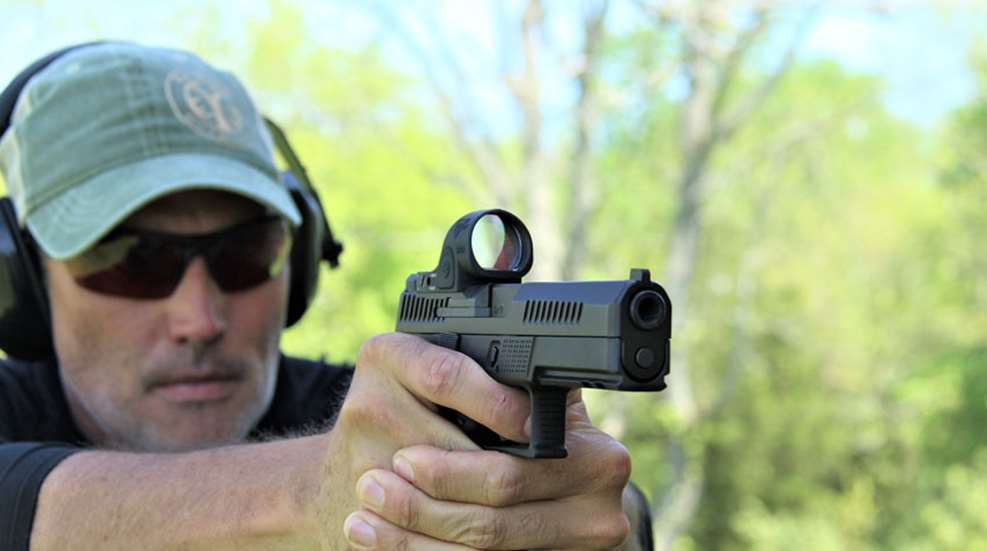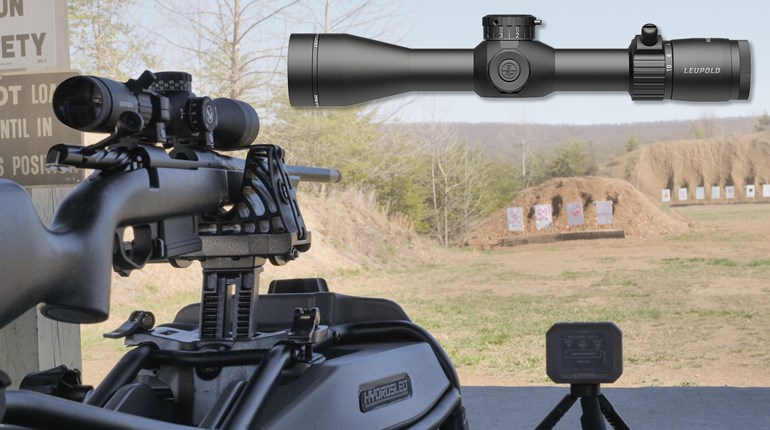
My father taught me to shoot when I was five years old, and we’ve made some great memories together in the field and on the range. Lately, however, my dad’s eyes aren’t as good as they used to be. Glaucoma, macular degeneration and age-related loss of acuity have limited his vision, and that precludes him from using iron sights as effectively as he once did. In a role reversal three decades in the making, I recently had a chance to introduce my dad to shooting—with a reflex sight. I mounted a Trijicon RMR on a CZ P-10 Optics Ready 9mm and gave my dad a crash course on the benefits and uses of reflex optics. And, in no time, he was once again drilling targets and enjoying his time on the range.
My dad’s not alone in his new-found love of reflex sights. Across the country competitive and recreational shooters and hunters are opting for reflex optics more frequently than ever before, and once you understand the benefits these sights offer, you’ll be ready to give them a try.
What is a Reflex Sight?
The terminology gets a bit confusing when we start discussing reflex sights and red dots. “Red dot” is a generic term for any sighting device that uses a red dot as the aiming point and isn’t magnified. The most common red dot sights today are reflex sights, and they work by emitting an aiming point onto a lens. Tube reflex sights contain the emitter and the lens in a cylinder and look like a scope, but they are larger. Open reflex sights lack a tube and are lighter and more compact. Reflex sights mostly use red dots as their aiming points, and that’s why they’re loosely (but accurately) called red dot sights. Because you’re looking through the lens at the object, the scene is slightly darker than it would be with natural light—but with many of the newer reflex optics color and light patterns are accurate, and look more natural than ever before.
Do You Need One?
There are a lot of reasons to add a reflex sight to your gun, but one stands out to me: ease of use. Instead of aligning sights as you would with a traditional handgun or rifle you simply raise the firearm, align the red dot on the desired point of impact, and so long as your zeroed for that distance the bullet will strike where the dot is being aimed. The dot makes it easy to see the POI even in low light, and it’s very fast. Those are two reasons why both competition shooters and law enforcement professionals choose reflex sights. When getting on target quickly is a priority, it’s difficult to beat a reflex sight.
Hunters can benefit from using reflex sights as well. When hunting small game, a lightweight reflex sight is the perfect complement to a rimfire rifle. I recently returned from a Nebraska deer hunt where I used a Trijicon SRO mounted on a Smith & Wesson .44 Magnum to hunt deer. I’ve used both iron sights and scopes on handguns before, but I think that in most instances a reflex sight is the perfect option. The SRO was light and compact, and its wide viewing window allowed me to keep both eyes open as an old whitetail buck chased a doe close to my stand. The shot was 58 yards, which was not a problem with the Trijicon. Like most shooters I’ve found that a quality red dot allows for precise shooting out to 100 yards or more.
What You Need To Know
The first thing that you’ll need to determine is whether or not your firearm accepts a reflex sight. If you have a top rail on your rifle, shotgun or handgun, then you’ll have no problem mounting a red dot. Most reflex sights run on batteries, but the good news is that battery lives are very long and many red dots have a built-in sensor that automatically shuts off after a period of inactivity to conserve battery life. Controls are generally quite basic and easy to master. Up and down arrows allow you to power the unit on and match the light intensity of the dot to the surroundings, and you can adjust point of impact using windage and elevation screws.
Dot size is a matter of preference and purpose, and red dot sizes are generally measured in minutes of angle or MOA. For example, a 1 MOA red dot sight will cover roughly 1 inch of the target at 100 yards—and that allows for accurate shooting at longer ranges. For closer shots at defensive ranges, you may opt for a larger dot like a 4 or 5 MOA, which is both plenty accurate for close distances and easy to see.
What about cost? Companies like Sightmark, Crimson Trace, Leupold, Vortex and Trijicon all offer red dot sights with prices ranging from $80 and up based on features and construction. What’s more, SCCY firearms recently announced they are offering their CPX 1 and CPX 2 semiauto pistols with a red dot sight for as little as $339, a great bargain for a pistol/sight combo.
If you haven’t yet tried a reflex sight I encourage you to do so. They offer a lot of benefits in a lightweight, durable, easy-to-use optic platform.






































